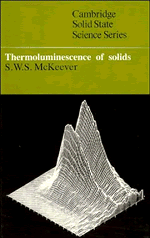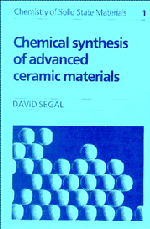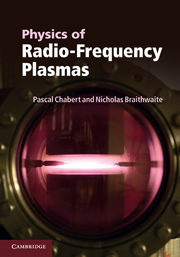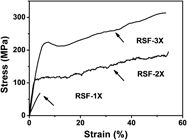Refine search
Actions for selected content:
106095 results in Materials Science
Contents
-
- Book:
- Structured Surfaces as Optical Metamaterials
- Published online:
- 01 June 2011
- Print publication:
- 21 April 2011, pp v-xii
-
- Chapter
- Export citation
Preface
-
-
- Book:
- Structured Surfaces as Optical Metamaterials
- Published online:
- 01 June 2011
- Print publication:
- 21 April 2011, pp xvii-xxii
-
- Chapter
- Export citation
Posttreatment of the dry-spun fibers obtained from regenerated silk fibroin aqueous solution in ethanol aqueous solution
-
- Journal:
- Journal of Materials Research / Volume 26 / Issue 9 / 14 May 2011
- Published online by Cambridge University Press:
- 19 April 2011, pp. 1100-1106
- Print publication:
- 14 May 2011
-
- Article
- Export citation
Nonlinear optical properties of Bi1.95La1.05TiNbO9 ferroelectric film grown on fused quartz substrates by PLD
-
- Journal:
- Journal of Materials Research / Volume 26 / Issue 9 / 14 May 2011
- Published online by Cambridge University Press:
- 19 April 2011, pp. 1159-1163
- Print publication:
- 14 May 2011
-
- Article
- Export citation
High-temperature order/disorder transition in the thermoelectric Cu3SbSe3
-
- Journal:
- Journal of Materials Research / Volume 26 / Issue 15 / 14 August 2011
- Published online by Cambridge University Press:
- 19 April 2011, pp. 2001-2005
- Print publication:
- 14 August 2011
-
- Article
- Export citation
Low-temperature fabrication of nanocrystalline silicon thin films on mechanically flexible substrates by vacuum arc discharge
-
- Journal:
- Journal of Materials Research / Volume 26 / Issue 9 / 14 May 2011
- Published online by Cambridge University Press:
- 19 April 2011, pp. 1076-1080
- Print publication:
- 14 May 2011
-
- Article
- Export citation
Self-heating of silicon microwires: Crystallization and thermoelectric effects
-
- Journal:
- Journal of Materials Research / Volume 26 / Issue 9 / 14 May 2011
- Published online by Cambridge University Press:
- 18 April 2011, pp. 1061-1071
- Print publication:
- 14 May 2011
-
- Article
- Export citation
A theory for polymorphic melting in binary solid solutions
-
- Journal:
- Journal of Materials Research / Volume 26 / Issue 8 / 28 April 2011
- Published online by Cambridge University Press:
- 11 April 2011, pp. 997-1005
- Print publication:
- 28 April 2011
-
- Article
- Export citation
JMR volume 26 issue 7 Cover and Front matter
-
- Journal:
- Journal of Materials Research / Volume 26 / Issue 7 / 14 April 2011
- Published online by Cambridge University Press:
- 08 April 2011, pp. f1-f4
- Print publication:
- 14 April 2011
-
- Article
-
- You have access
- Export citation
JMR volume 26 issue 7 Cover and Back matter
-
- Journal:
- Journal of Materials Research / Volume 26 / Issue 7 / 14 April 2011
- Published online by Cambridge University Press:
- 08 April 2011, pp. b1-b4
- Print publication:
- 14 April 2011
-
- Article
-
- You have access
- Export citation
Elevated temperature intergranular cracking of heat-resistant alloy under tensile stress
-
- Journal:
- Journal of Materials Research / Volume 26 / Issue 8 / 28 April 2011
- Published online by Cambridge University Press:
- 05 April 2011, pp. 1006-1011
- Print publication:
- 28 April 2011
-
- Article
- Export citation

Thermoluminescence of Solids
-
- Published online:
- 04 April 2011
- Print publication:
- 23 May 1985

Chemical Synthesis of Advanced Ceramic Materials
-
- Published online:
- 04 April 2011
- Print publication:
- 28 July 1989

Physics of Radio-Frequency Plasmas
-
- Published online:
- 04 April 2011
- Print publication:
- 24 February 2011
How researchers can help K–12 teachers bring materials science into the classroom
-
- Journal:
- MRS Bulletin / Volume 36 / Issue 4 / April 2011
- Published online by Cambridge University Press:
- 27 April 2011, pp. 284-289
- Print publication:
- April 2011
-
- Article
- Export citation
CAREER CENTRAL
-
- Journal:
- MRS Bulletin / Volume 36 / Issue 4 / April 2011
- Published online by Cambridge University Press:
- 27 April 2011, pp. 317-319
- Print publication:
- April 2011
-
- Article
-
- You have access
- Export citation
Meet Our Authors
-
- Journal:
- MRS Bulletin / Volume 36 / Issue 4 / April 2011
- Published online by Cambridge University Press:
- 27 April 2011, pp. 261-262
- Print publication:
- April 2011
-
- Article
-
- You have access
- HTML
- Export citation
MRS governance documents to be modernized
-
- Journal:
- MRS Bulletin / Volume 36 / Issue 4 / April 2011
- Published online by Cambridge University Press:
- 27 April 2011, pp. 238-239
- Print publication:
- April 2011
-
- Article
-
- You have access
- HTML
- Export citation
The 9th International Conference on Nitride Semiconductors to be held in July 2011
-
- Journal:
- MRS Bulletin / Volume 36 / Issue 4 / April 2011
- Published online by Cambridge University Press:
- 27 April 2011, p. 304
- Print publication:
- April 2011
-
- Article
-
- You have access
- HTML
- Export citation
Accurate in situ measurements of dielectric constants obtained in THz range
-
- Journal:
- MRS Bulletin / Volume 36 / Issue 4 / April 2011
- Published online by Cambridge University Press:
- 27 April 2011, p. 244
- Print publication:
- April 2011
-
- Article
-
- You have access
- HTML
- Export citation







 , where
, where 
